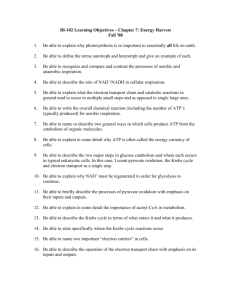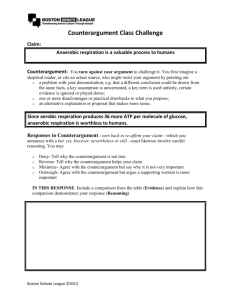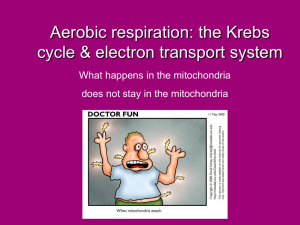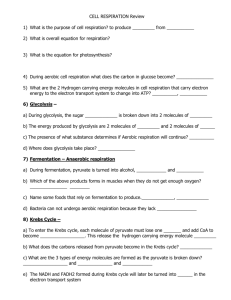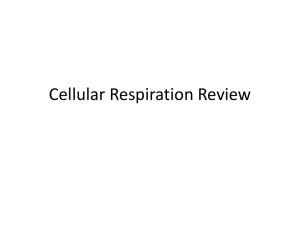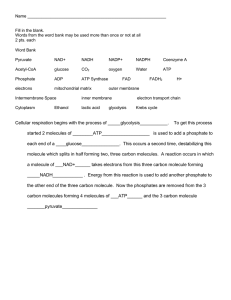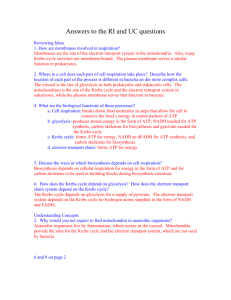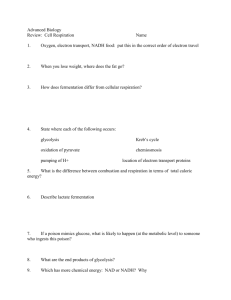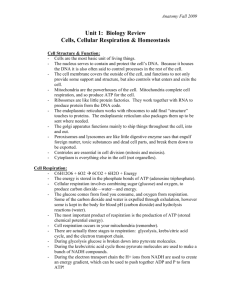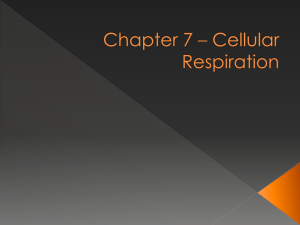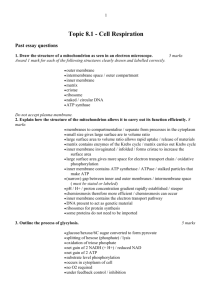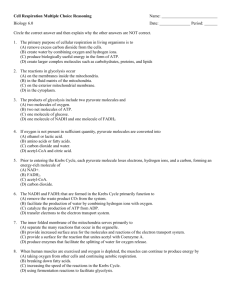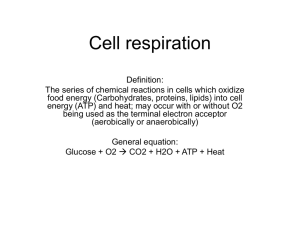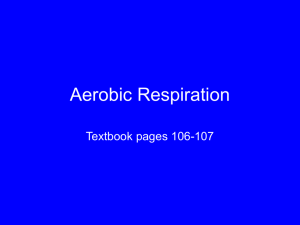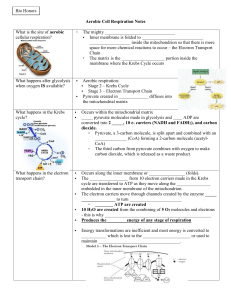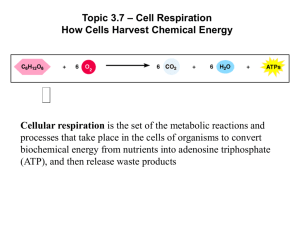Aerobic Cellular Respiration
advertisement
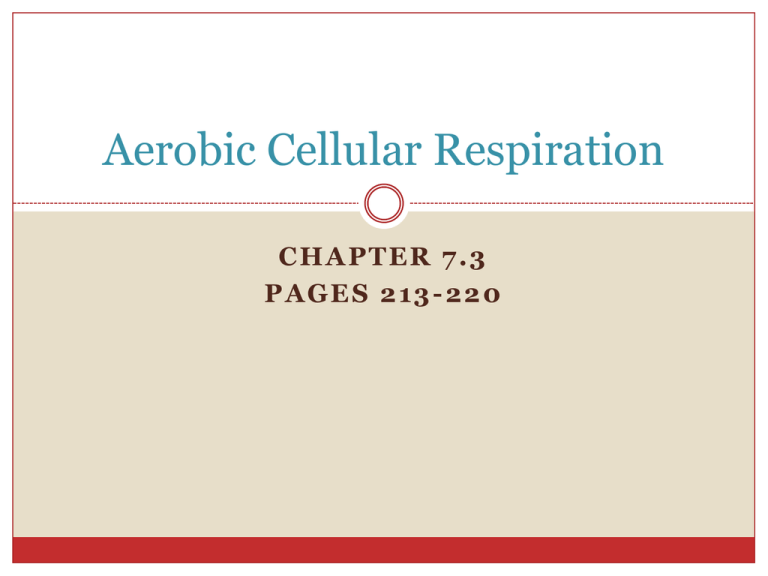
Aerobic Cellular Respiration CHAPTER 7.3 PAGES 213-220 Mitochondria Round or sausage shaped organelle Specialize in the production of large quantities of ATP Site of aerobic cellular respiration ATP production requires free oxygen Mitochondria Stage 2: Pyruvate Oxidation A CO2 is removed from each pyruvate and released as a waste (1/3 of the CO2 that we breathe out) 2. NAD+ is reduced by two H atoms 3. Coenzyme A is attached to the remaining 2-carbon portion forming acetyl-CoA – which enter the Krebs cycle. The NADH proceeds to Stage 4 (electron transport and chemiosmosis) 1. Practice Questions Page 215 What stages of aerobic cellular respiration take place in the mitochondria? 2. What happens to NAD+ in Stage 2 of aerobic cellular respiration? 3. What is the role of coenzyme A? 1. Stage 3: The Krebs Cycle Key Features of the Krebs Cycle • Since 2 molecules of acetyl-CoA are formed from one molecule of glucose, the Krebs cycle occurs twice for each molecule of glucose processed • As acetyl-CoA enters the cycle, the CoA is released and can be used for the next pyruvate •During one complete cycle a total of 3 NAD+s and 1 FAD are reduced to form 3 NADHs and 1 FADH2s • During one complete cycle an ADP and Pi are combined to form 1 ATP • During one complete cycle, 2 CO2 molecules are produced. These are released as waste Krebs Cycle Stage 4: Electron Transport and Chemiosmosis NADH and FADH2 eventually transfer the hydrogen atom electrons they carry to the ETC (electron transport chain) As the electrons are passed along carrier molecules, the energy released is used to pump hydrogen ions across the membrane through membrane pumps into the intermembrane space The electrons are finally accepted by oxygen molecules and water is the byproduct of the electron transport chain Electron Transport Chain (ETC) Chemiosmosis and Oxidative ATP Synthesis Hydrogen ions that accumulate in the intermembrane space form an electrochemical gradient The protons are forced through a proton channel associated with the enzyme ATP synthase (ATPase) The energy that is released forms ATP from ADP + Pi One NADH generates three ATPs One FADH2 generates two ATPs Oxygen is needed to keep the electrons flowing through the ETC ATP Synthesis The Aerobic Respiration Energy Balance Sheet

